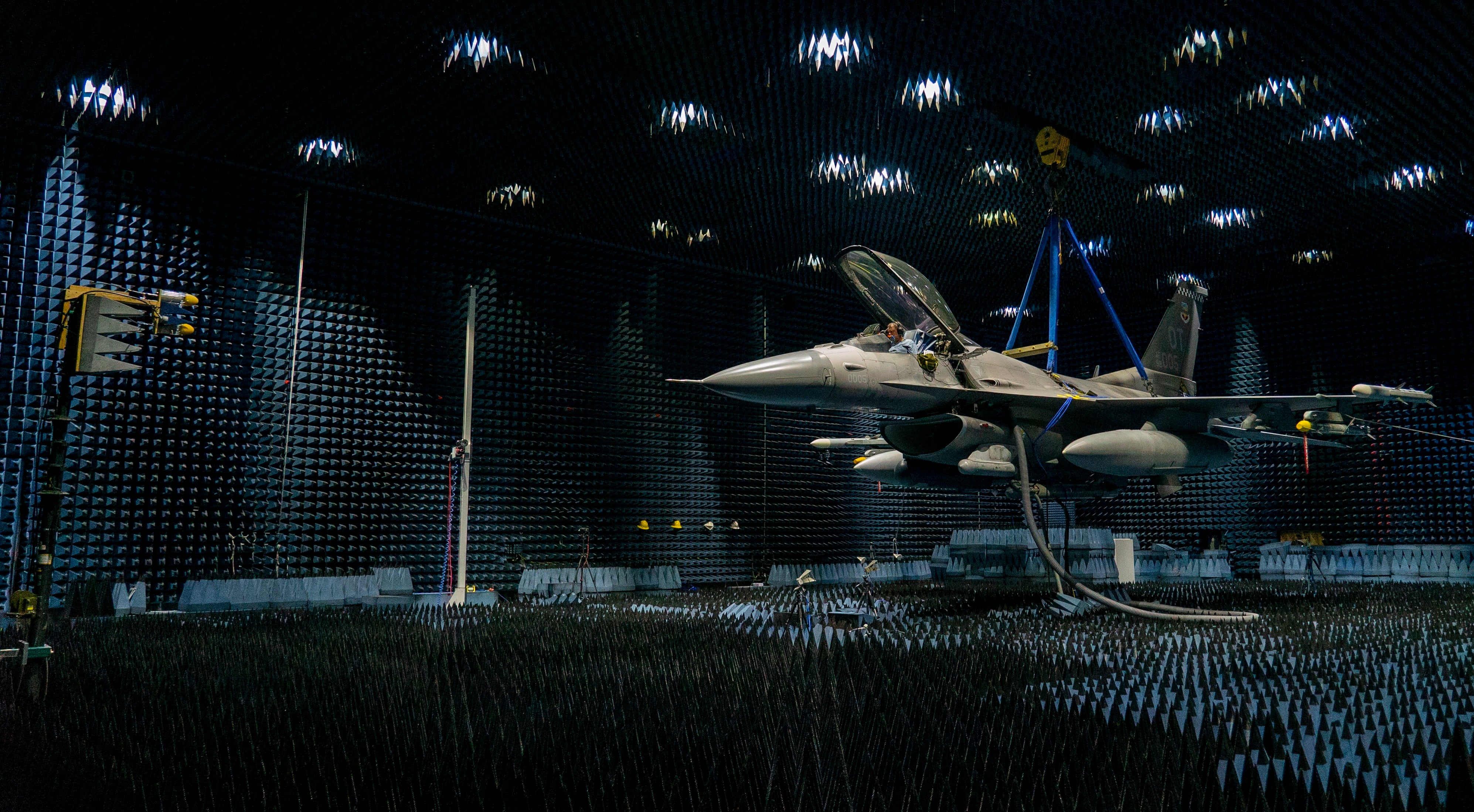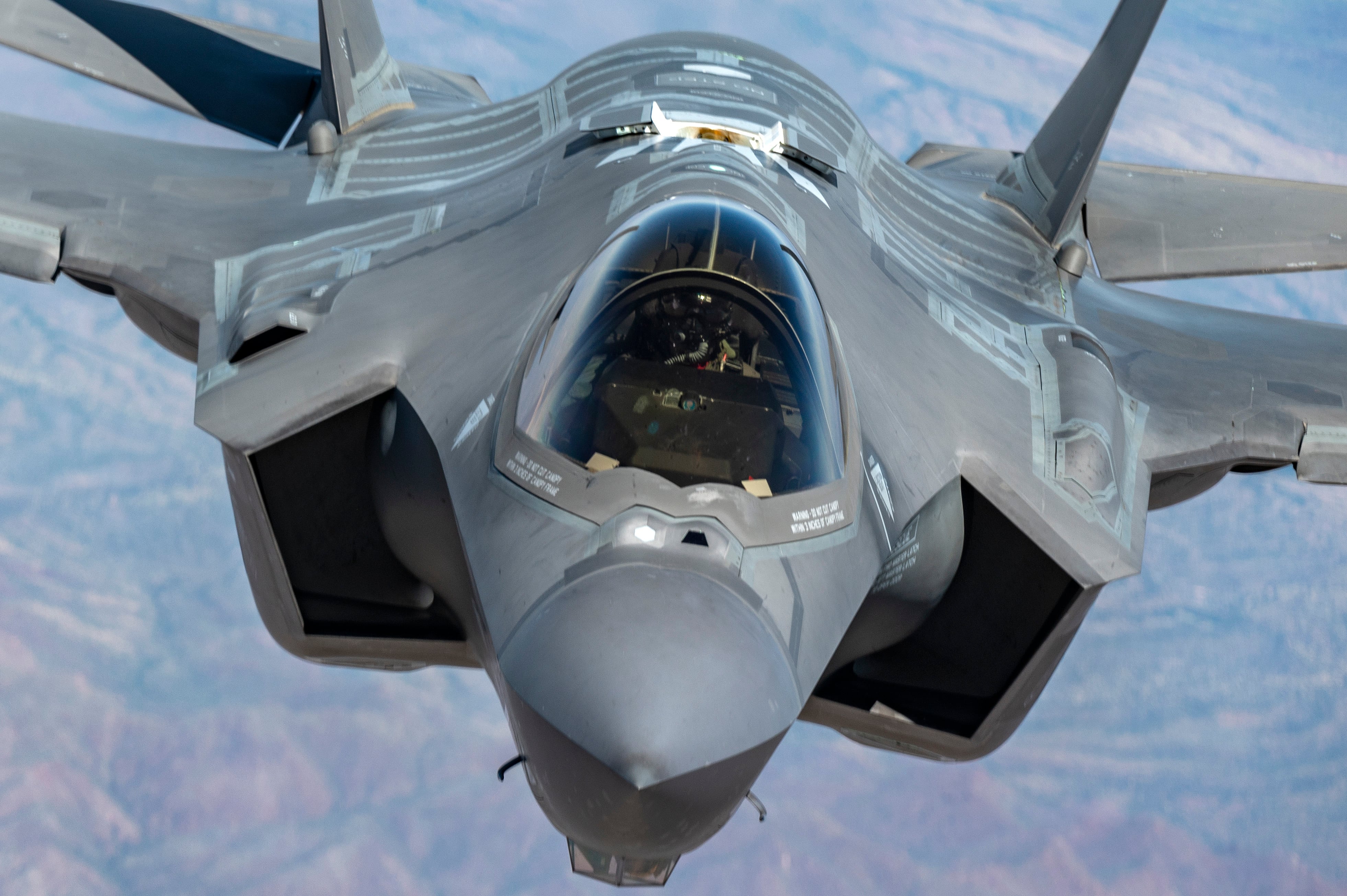WASHINGTON — An Air Force test and evaluation squadron hopes a football-sized device mounted in an F-35 fighter′s weapons bay might revolutionize how it collects in-flight data on operational fighter jets.
Air Combat Command’s 59th Test and Evaluation Squadron at Nellis Air Force Base in Nevada earlier this year started adding these devices, dubbed the Quick Reaction Instrumentation Package, or QRIP, to operational F-35s. Before that work began in March, QRIPs had been used in a dozen test F-35s across the Air Force, Navy and Marine Corps.
And in a Nov. 10 interview with Defense News, squadron commander Lt. Col. Nathan “Sheik” Malafa said he hopes to expand the use of these devices to more Air Force fighters — and perhaps even other aircraft across the fleet — allowing it to collect and “crowd-source” flight data much more cheaply than the service used to.
“QRIP is the end result of the gains of technology that we’re able to use to get everything smaller, more compact, and have a bigger impact,” Malafa said.
RELATED

The Air Force regularly collects flight data from its aircraft, that is then sent back to contractors so the companies can improve its software. At the end of the process, the upgraded software is pushed out to combat aircraft.
In the past, Malafa said, test F-35s recorded data with a 2,500-pound pod that took up an entire weapons bay and cost $25 million apiece. Sometimes data took weeks or months to access. That kind of a device was too cumbersome and expensive to even think of integrating into an operational aircraft, he said.
Advancements in technology and miniaturization of chips and other components made a much more compact system possible, he said.

Airmen in the 59th began developing the idea for a more compact data collection tool about three years ago. The data being collected by test fighters was inadequate and not coming in fast enough, he said, prompting the squadron to brainstorm ideas.
“It was a bar napkin kind of idea,” Malafa said. “What if we reduce the size? Because the program was not delivering the flight test instrumentation requirements in time for what we needed to do when the F-35s went from Block 2 to Block 3. So, necessity bore that innovation.”
That idea soon became QRIP, an 8-pound device roughly the size of a football that is bolted inside the F-35′s weapons bay without taking up all the room or requiring any panels to be removed. It can record almost a terabyte of data per flight. The price tag for a single Curtiss-Wright Corporation-made QRIP: $230,000, a fraction of the old system’s cost.
The QRIP is wired to the F-35′s computers to collect vehicle system and mission system data — everything from altitude, power levels, performance and any potential malfunctions that engineers would have to sift through after a flight to figure out what problems may need to be fixed.
The squadron began installing QRIPs on test F-35s a little more than two years ago, Malafa said, and then began considering the possibility of adding them to operational fighters.
The 59th has so far added QRIP to 19 operational Air Force F-35As, beginning in March 2022, and more are on the way. These F-35s are in a variety of locations, though Malafa would not specify where, and some have taken part in exercises outside of the continental U.S.
Having the QRIP loaded on operational F-35s flying real-world missions will allow the Air Force to collect a greater variety of flight data that it wouldn’t get in a test environment, Malafa said.
“They’re flying in Alaska where there’s mountains, [and in other] different types on environments and collecting that kind of data,” Malafa said of the operational F-35s.
Right now, QRIP is not on any other aircraft but Malafa said the squadron wants to put it on F-22s next — first test Raptors next year, and eventually moving to operational F-22s. An F-22-mounted QRIP is “well down the development pipeline” and being tested, he said.
The next step will be working with F-22 maker Lockheed Martin to figure out the best way to integrate QRIP into the F-22, although Malafa couldn’t say when it might be integrated into the F-22.
The squadron is also working on a QRIP for F-16s and A-10s, he said. F-15s already collect enough data, he said, but might need a new system to manage the information. And Malafa said his squadron is looking at how to get these devices into MQ-9 Reapers and bombers such as the B-52 Stratofortress.
And as the Air Force moves forward with its B-21 Raider, Next Generation Air Dominance family of fighter systems and drone wingmen known as collaborative combat aircraft, Malafa said it will be important for the Air Force to “bake in” this kind of data collection capability from the start. That way, the service won’t have to go back years later and retrofit them with technology like QRIP.
The flight data QRIP collects will help improve the mission data files the F-35 uses to understand its environment and know what threats to search for, Malafa said. It will also allow the Air Force to find and fix bugs in the software, collect information that intelligence offices could use, and help maintainers find or predict where the F-35 needs to be fixed.
And if something goes wrong with a fighter down the line, the pool of data collected by QRIP over the years could help the Air Force go back and try to find early warning signs of the problem.
Malafa said the Air Force wants to work with companies that provide artificial intelligence and machine learning technology to develop tool sets that could let it better use the data collected by QRIP.
“One of the things we’re looking at doing [with QRIP-collected data] is that predictive maintenance,” Malafa said. “If you can get ahead of the ballgame on that, that’s a game-changer.”
Stephen Losey is the air warfare reporter for Defense News. He previously covered leadership and personnel issues at Air Force Times, and the Pentagon, special operations and air warfare at Military.com. He has traveled to the Middle East to cover U.S. Air Force operations.







